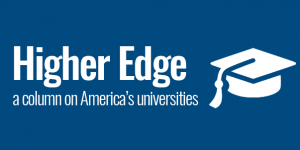“The most important thing when picking classes is choosing the right professor.”
This is the platitude every incoming freshman is bombarded with when they pick their classes for the first time. It’s the same advice that those freshmen will then pass on to the newest incoming class once they are older and wiser upperclassmen. The reason why this advice is given out at college campuses year after year is because it’s true. Professors have the potential to either make or break the course. I have enjoyed learning even the driest and densest material when it was taught by enthusiastic professors and grew disdainful toward subjects I once enjoyed because of the professor’s dull, half-hearted lectures.
Although professors are integral to undergraduates’ experiences at universities, good teaching is currently battling a variety of obstacles. As Georgetown professor Jacques Berlinerblau said in a recent article published in The Chronicle, professors are being disincentivized from teaching. “While teaching undergraduates is, normally, a large part of a professor’s job, success in our field is correlated with a professor’s ability to avoid teaching undergraduates,” he wrote.
Berlinerblau explains that when he began teaching at the lowest quality public community colleges, he had to teach six courses per semester. As he climbed the ladder toward more prestigious universities, he was able to teach less and less. He was conditioned to work with the aim of ultimately obtaining a “double zero”, where a professor teaches zero undergraduate courses in both fall and spring semesters. This problem is particularly pervasive at more prestigious universities, where research work and publications are prized over the intangible quality of student education.
Even at a university like Georgetown, where the majority of courses are taught by professors, teaching assistants are often the ones who do the grunt work. This is the case in large lectures and small seminars alike; teaching assistants are the ones who engage with students in discussion sections, grade assignments, and work to make the material more easily digestible. Professors of these courses, on the other hand, get to stand in front of the classroom and lecture material without having to interact with undergraduates, with the exception of those sycophants who show up to office hours.
In addition to the professor’s role becoming further removed from the classroom, when professors are in the classroom, there are few mechanisms in place to hold professors to a high standard of teaching. This lack of accountability in the classroom has resulted in what Indiana University Bloomington professor Murray Sperber calls “the faculty/student non-aggression pact.” According to Sperber, this pact is a mutually beneficial tacit agreement between students and their professors. Professors do not need to expend excessive time and energy trying to develop in-depth lesson plans and challenging assignments. Students in return are only assigned minimal amounts of work, but rewarded with high grades. Both sides win and neither has to argue over grades or workload.
At Georgetown and at many other institutions, course evaluations are provided as a means for student feedback to maintain professor accountability. These evaluations, however, might actually further promote sub-par teaching as opposed to preventing it. According to several reports, when students are evaluating their professors, they are more likely to rate more lenient professors higher in all aspects of course evaluations. In a survey conducted at San Jose State University, for instance, 70 percent of students revealed that their expected grade in a course influenced their professor evaluations. Furthermore, Herbert Marsh suggested that professors are also aware of this positive correlation between grading leniently and better evaluations. In one survey, 38 percent of professors admitted to altering their courses to make them easier after receiving negative student evaluation feedback.
Although course evaluations should be holding professors to higher teaching standards, in practice, they effect the opposite results. In addition to pushing professors toward teaching less rigorously, they also force professors to hesitate before discussing contentious topics in class such as gay marriage, abortion, and religion. Williams and Ceci published a report, which asserted that student evaluations are “opinion polls.” Professors are put in a defensive position where they, to a certain extent, avoid teaching material that might not be agreeable with all students.
If we want to hold teachers to the highest possible standards, however, it would be incorrect to completely eliminate course evaluations. Instead, universities need to develop better ways of using them. At Georgetown, the quantitative results of course evaluations, such as multiple choice questions, are provided to faculty, department chairs, program directors, deans, and the provost. These administrators are expected to make important decisions about professors’ rank, tenure, and merit based on quantitative data that may be misleading. Qualitative results, articulated through written comments, are available only only to the faculty member to whom they pertain through CoursEval.
There are no clear solutions to improving professor quality, but expanding the accessibility of written student feedback and contextualizing data by also considering mean grades in a course would be a good place for universities to start. If these types of changes are not made, universities are not only allowing lackadaisical teaching from their professors, but also encouraging it.


